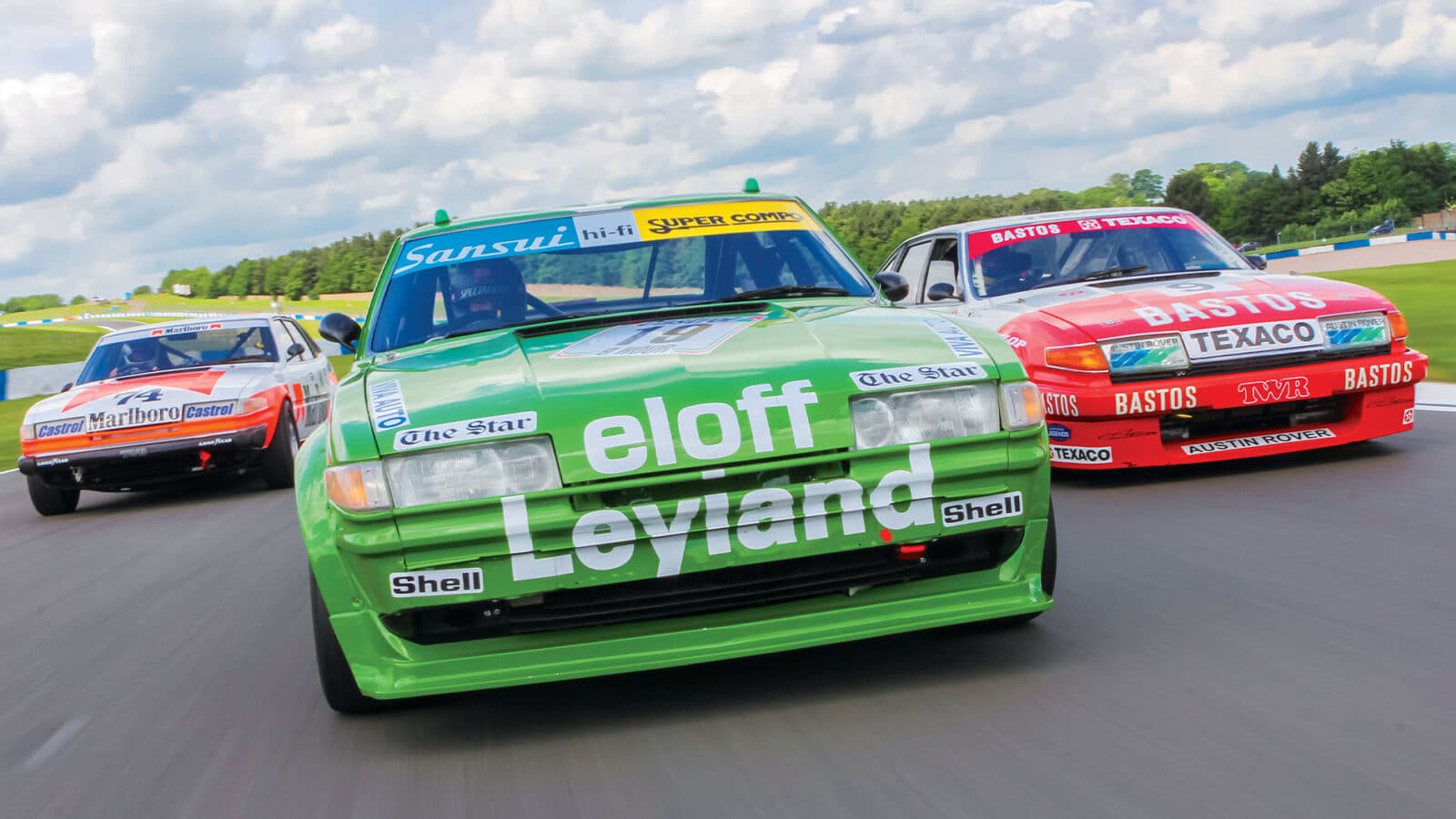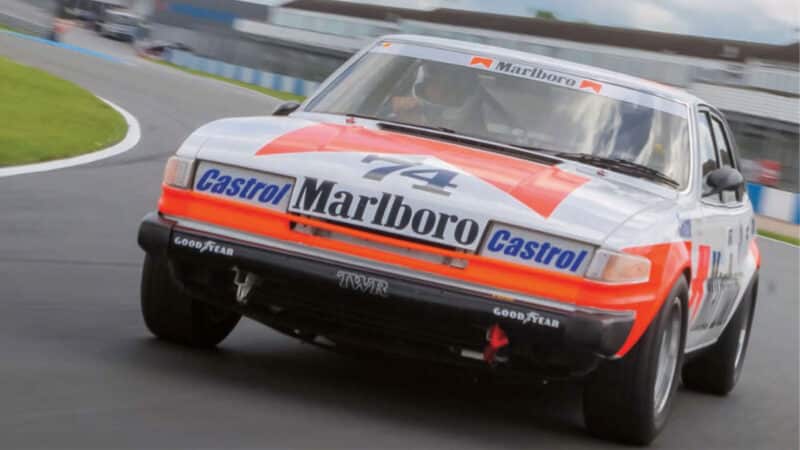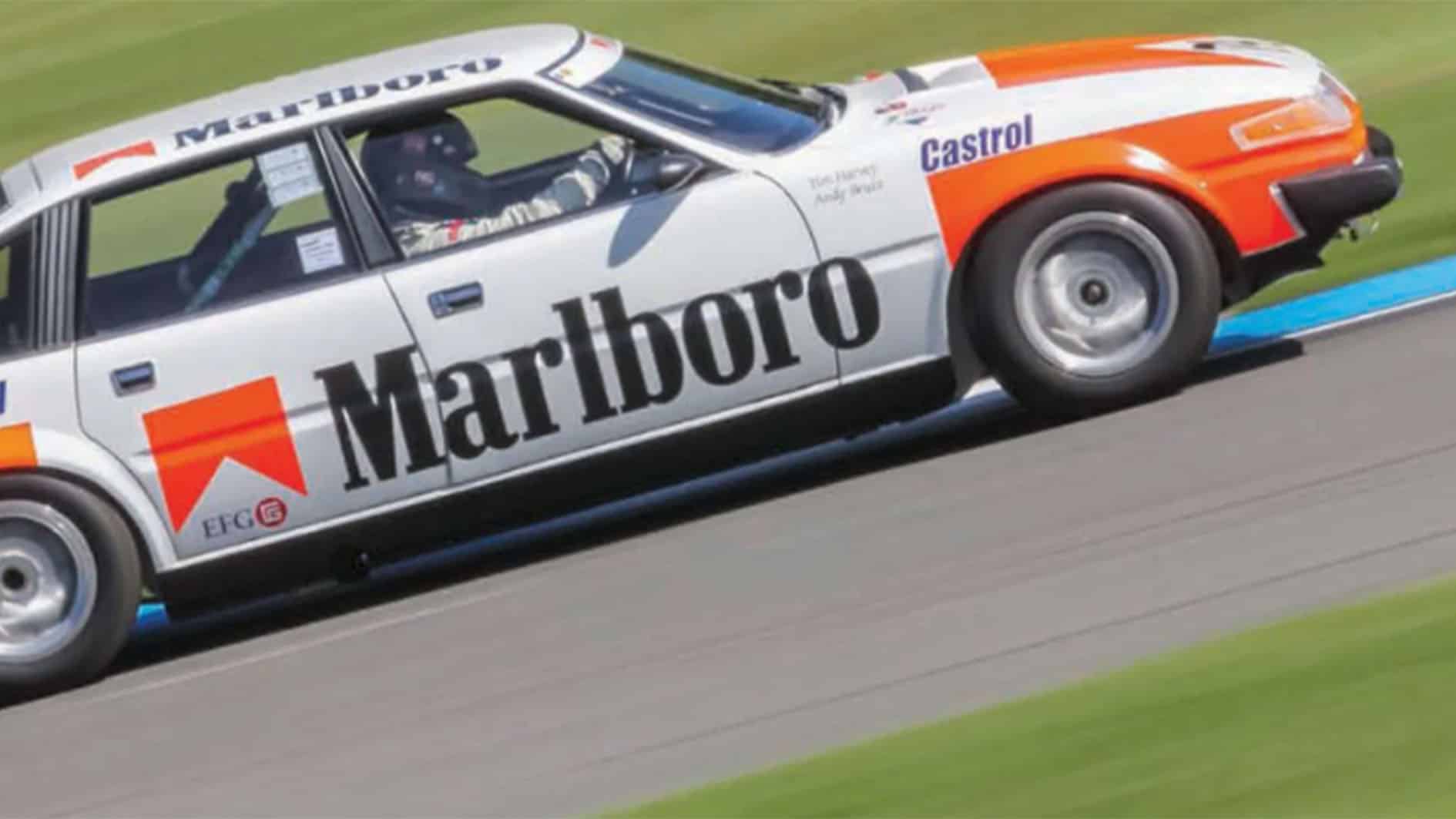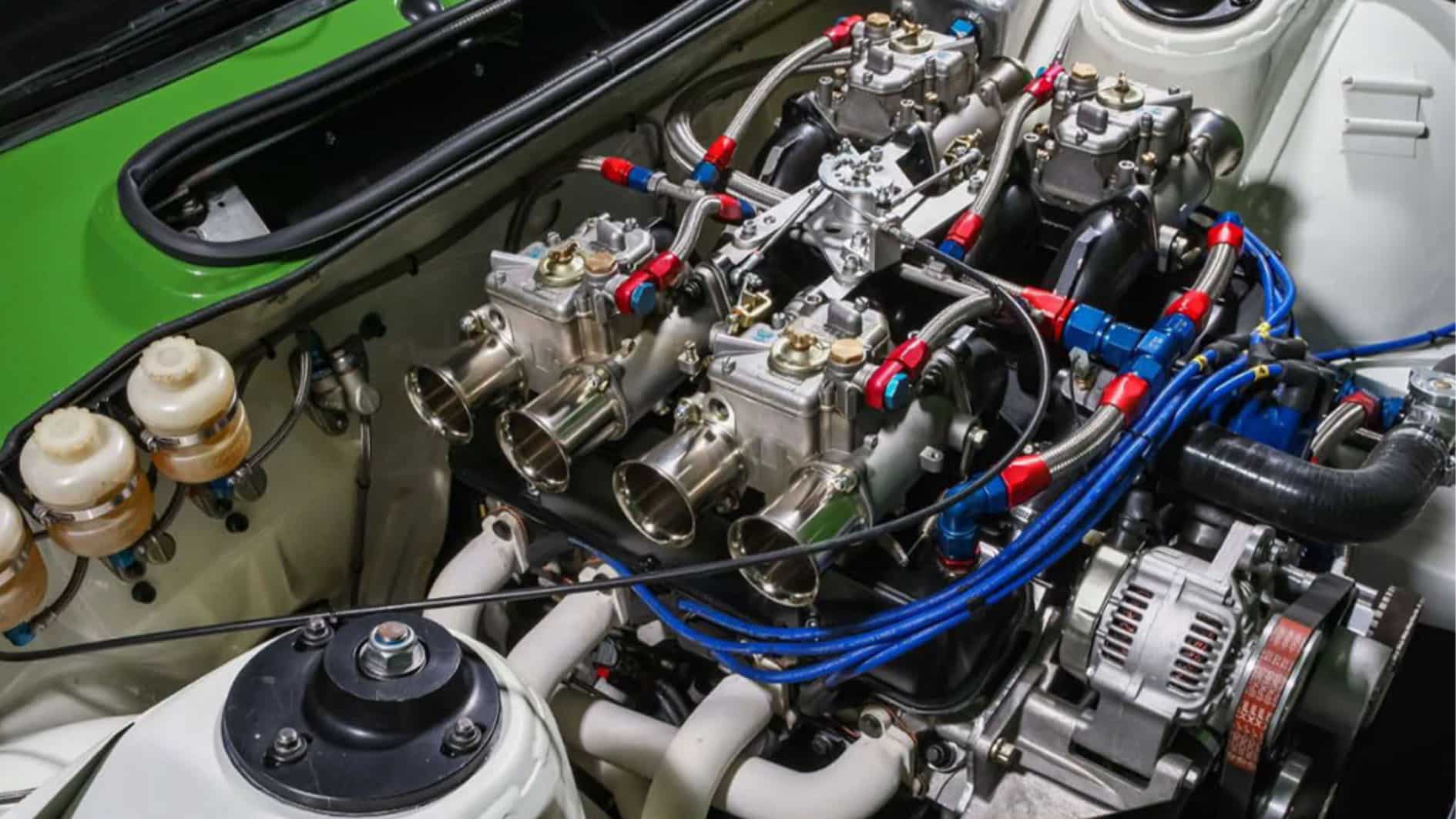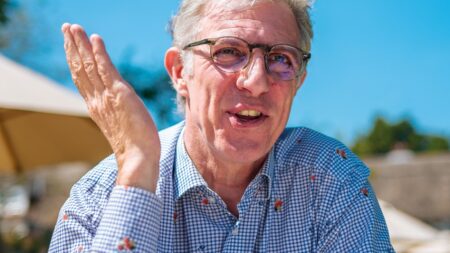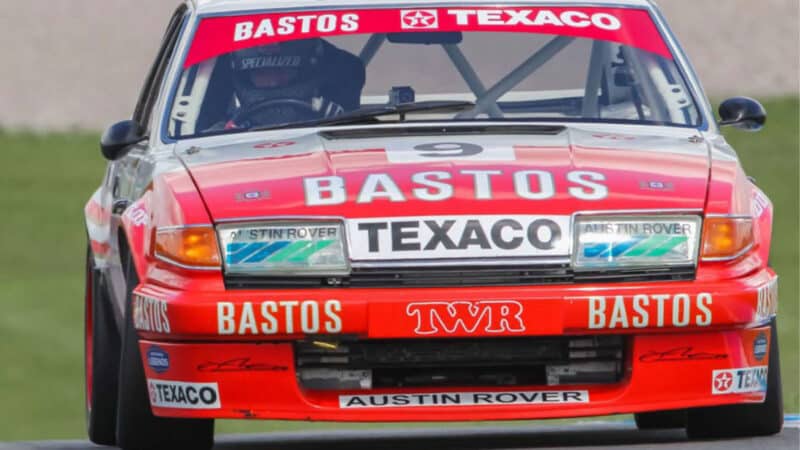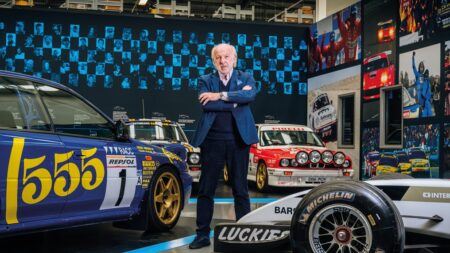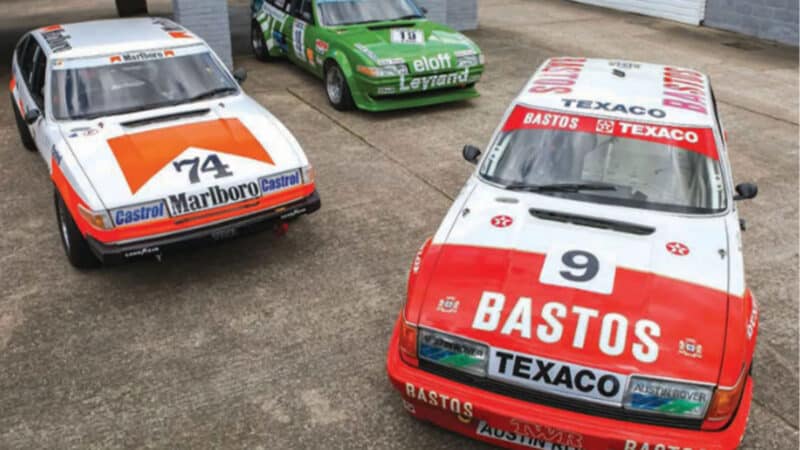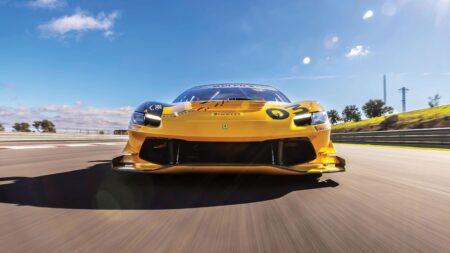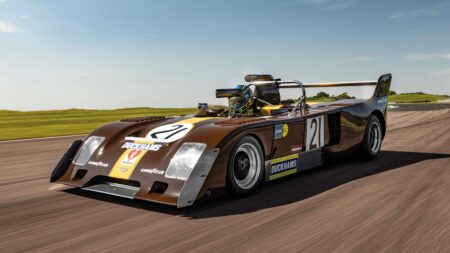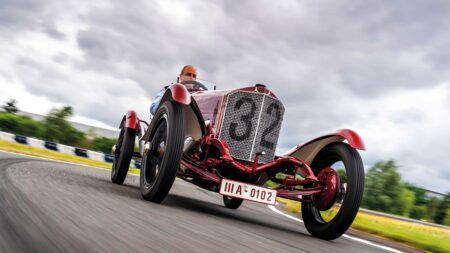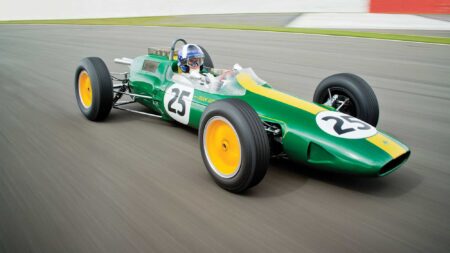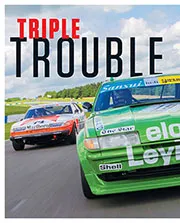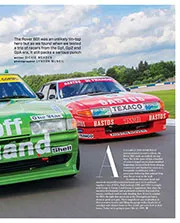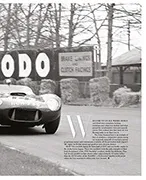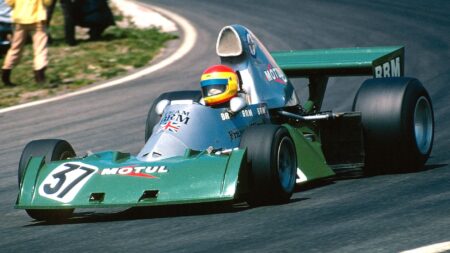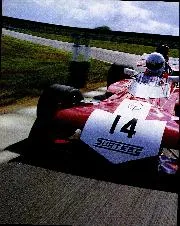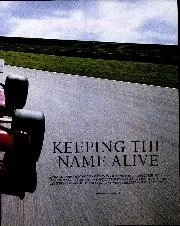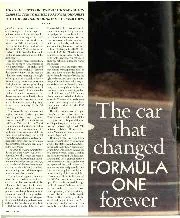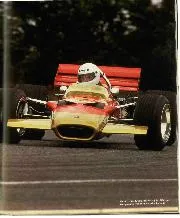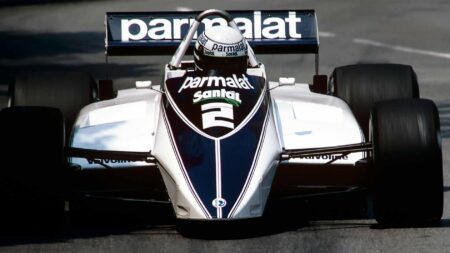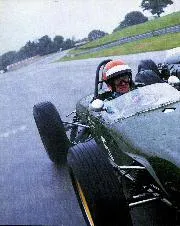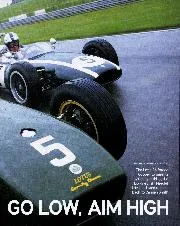Tighter turns require a more deliberate approach, just to make sure you don’t get the front pushing wide, but so long as you’re sensitive with your initial steering inputs you’ll be able to bring the tail into play and divide the labour more evenly between both ends of the car. Medium- and high-speed corners are where the real fun is. You really just nudge it into the direction change with the steering before picking the throttle up and playing it smoothly into a modest amount of oversteer. Somewhere between an eighth and a quarter of a turn feels sweetest, keeping that momentum going without excessive steering inputs or big stabs of throttle.
Of course, you can provoke more exuberant slides, but it feels at odds with the precision and progressive nature of the car. Find its natural balance point and it’ll flow from one apex to the next, even down the Craners where you initiate the right-to-left direction change with a slight feathering of the throttle before steering neatly into the ensuing slide, fine directional control applied with your hands and right foot. It’s a fabulous and easily accessed sensation which really connects you to the car and makes you appreciate how inherently benign and well-balanced it is for what looks like a big old boat.
Without question the weakest area of the car is its brakes. Initially, they have a confidence-inspiring pedal feel but there’s not much stamina, especially on Donington’s GP circuit configuration which is hard on brakes. Even taking care not to hammer them it only takes two or three laps to feel that initial firmness turn soggy. They recover if you give them a break – or tap them up with your left foot between the corners – but it’s a timely reminder that successfully racing these cars back in the day must have been as much about leaving something in reserve as it was about finding the limit. That said, at Goodwood, where you spend far more time on the throttle than the brakes, this modest yet marvellous old car must be an absolute joy to coax through the fearsome run from Madgwick to Lavant.
Group 2
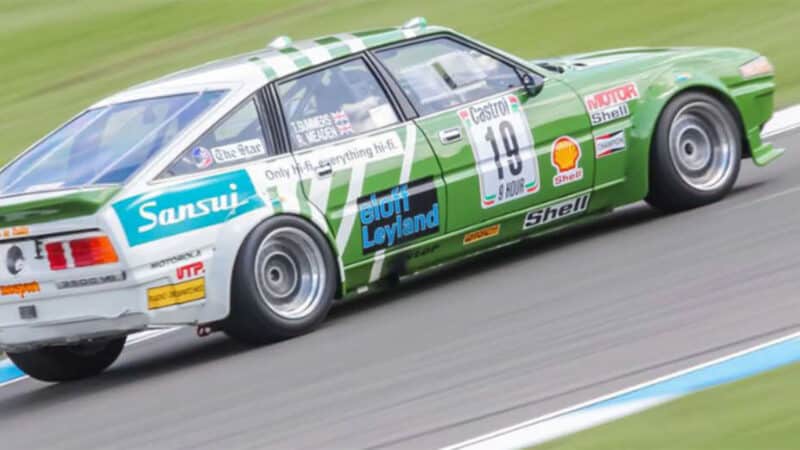
Beefier, brawnier and more of a racer, the Gp2 car with its four twin Webers has a wonderful voice, but it’s tougher to hustle
Lyndon McNeil
After the modesty of the Group 1 car the brawny 1981 Group 2 is as in-yer-face as SD1s ever got. Shorn of its bumpers and with massive tyres shoe-horned beneath wildly extended wheel arches, it’s an extreme caricature and raises big smiles before you’ve so much as cranked the engine over.
Also built by David Price Racing, it’s something of an SD1 unicorn, being the only Group 2 car DPR produced before TWR took control of Rover’s racing activities. That rarity was exacerbated by the fact this car was delivered straight to South Africa, where it was campaigned by the O’Sullivan brothers in the 1981 and ’82 Kyalami 9 Hours followed by the 1983 and ’84 Kyalami 1000Kms, where it raced alongside the Group C monsters of the day.
After passing through a number of hands in South Africa the car was purchased in 2014 by present owner Tim Summers, who placed it with UK-based BGM Sport for a fastidious restoration, after which Summers raced it throughout the 2015 season in Peter Auto’s burgeoning Heritage Touring Cup. I was fortunate to share it with Summers at Spa and Paul Ricard and have fond memories of the car.
Consequently it’s great to see the Jolly Green Giant parked next to its brethren. It’s a larger-than-life car – beautifully finished and immaculately detailed, right down to the brown corduroy-upholstered racing seat. The driving experience is an extension of the beefed-up look. Indeed you need similarly bulky arms and shoulders, for the unassisted steering is about as heavy as you can reasonably expect to cope with. There’s a pleasing uniformity to other control weights that underlines the seriousness of the car without inhibiting your ability to drive it, and immediately it feels much more like a race car than the Group 1 version did.
That said, the gearbox remains closely related to the road specification, so while the shift action itself is sharper and more defined you have to treat it with respect for the transmission doesn’t have the inherent strength of the later Group A cars, even though the engine boasts more power and torque.
Lift the bonnet and you’re treated to the truly magnificent sight of four twin-choke Weber 45s inhaling through stubby velocity stacks. It’s one of best-looking V8’s I’ve ever seen, and when you work it towards its 7500rpm limit it’s one of the best I’ve ever heard.
Where you coax and caress the Group 1 car around Donington’s swoops and curves you propel the Group 2 car, leaning harder and harder on the huge slick tyres. To begin with the grip feels limitless, but eventually you find the confidence to probe the point at which their prodigious purchase begins to fade.
Funnily enough, although the corner speeds are vastly different there are strong similarities in what the Group 1 and Group 2 cars do. With a long wheelbase relative to track width, the SD1 is extremely progressive, but if you’re too quick and insistent with your initial steering input you’ll quickly push through the limit of the front tyres. Better to make a more measured input, then ask more from the tyres. It’s subtle stuff to deploy in such a ballsy car, but it really pays dividends.
